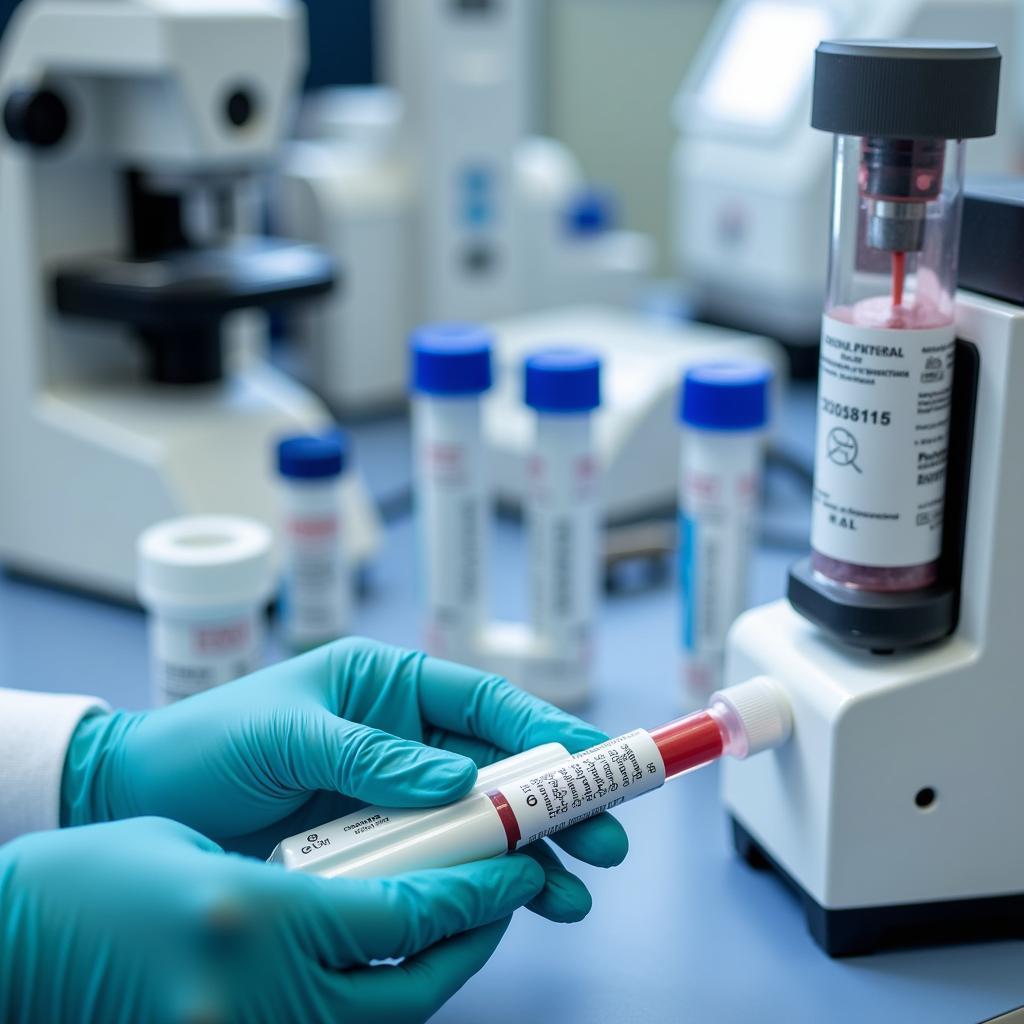Bleeding time is a medical test once used to assess platelet function, a crucial aspect of blood clotting. This test involved making a small incision on the forearm and measuring the time it took for the bleeding to stop. While seemingly straightforward, bleeding time has fallen out of favor as a diagnostic tool for blood disorders due to several limitations.
Why Bleeding Time is No Longer a Preferred Diagnostic Tool
Despite its historical use, bleeding time is no longer considered a reliable or practical method for diagnosing blood disorders. Here’s why:
- Lack of Standardization: One of the most significant drawbacks of bleeding time is the lack of a standardized protocol. Variations in incision depth, device used, and even ambient temperature could significantly influence the results, leading to inconsistent and unreliable interpretations.
- Poor Predictive Value: Bleeding time doesn’t always correlate well with the risk of excessive bleeding during surgery or other invasive procedures. Many individuals with normal bleeding times may still experience bleeding problems, while others with prolonged bleeding times might not.
- Availability of Better Alternatives: Modern medicine offers more accurate and reliable tests to evaluate platelet function and diagnose bleeding disorders. These tests, such as platelet function assays and genetic testing, provide a more comprehensive understanding of an individual’s bleeding risk.
- Inconvenience and Discomfort: The bleeding time test, while relatively simple, involves a skin incision and can be uncomfortable for the patient. The procedure also carries a small risk of complications, such as infection.
Modern Alternatives to Bleeding Time for Diagnosing Blood Disorders
Today, healthcare professionals rely on a range of advanced tests that offer a more accurate and detailed assessment of platelet function and bleeding disorders. These include:
- Platelet Function Assays: These tests directly measure the ability of platelets to adhere to each other and to blood vessel walls, providing a more precise evaluation of platelet function compared to bleeding time.
- Genetic Testing: For individuals with a family history of bleeding disorders, genetic testing can identify specific gene mutations associated with these conditions, enabling early diagnosis and personalized treatment plans.
- Coagulation Tests: These tests, such as prothrombin time (PT) and partial thromboplastin time (PTT), measure the time it takes for blood to clot. They are essential for diagnosing disorders related to specific clotting factors.
 Modern Blood Testing Equipment
Modern Blood Testing Equipment
The Importance of Consulting a Healthcare Professional
If you have concerns about a potential blood disorder, it’s crucial to consult a qualified healthcare professional. They can recommend appropriate diagnostic tests based on your medical history, symptoms, and individual needs.
“While bleeding time was once a common test, it’s essential to recognize that medical advancements have led to far superior diagnostic options,” says Dr. Emily Carter, a hematologist at the University of Chicago Medical Center. “Patients should feel empowered to discuss these newer tests with their doctors to ensure they receive the most accurate and informative evaluation.”
Conclusion
Bleeding time, once a mainstay in blood disorder diagnosis, has largely been replaced by more accurate and reliable tests. While it may still be used in some limited circumstances, its limitations have led to its decline in modern medicine. The evolution of diagnostic tools highlights the continuous advancements in healthcare and emphasizes the importance of seeking up-to-date medical advice for optimal diagnosis and treatment.
For more information on diagnosing and managing blood disorders, please contact ScanToolUS at +1 (641) 206-8880 or visit our office at 1615 S Laramie Ave, Cicero, IL 60804, USA.
FAQs
1. What should I do if I’m concerned about a bleeding disorder?
Consult your doctor or a hematologist. They will assess your medical history and recommend appropriate tests.
2. Are platelet function assays painful?
These tests typically involve a standard blood draw and are no more uncomfortable than regular blood tests.
3. Is genetic testing for bleeding disorders expensive?
The cost of genetic testing can vary, and it’s best to discuss coverage options with your insurance provider.
4. Are bleeding disorders always hereditary?
While some bleeding disorders are genetic, others can be acquired due to factors like medications, vitamin deficiencies, or other medical conditions.
5. How are bleeding disorders treated?
Treatment varies depending on the specific disorder and its severity. It may include medications, blood transfusions, or other therapies.

